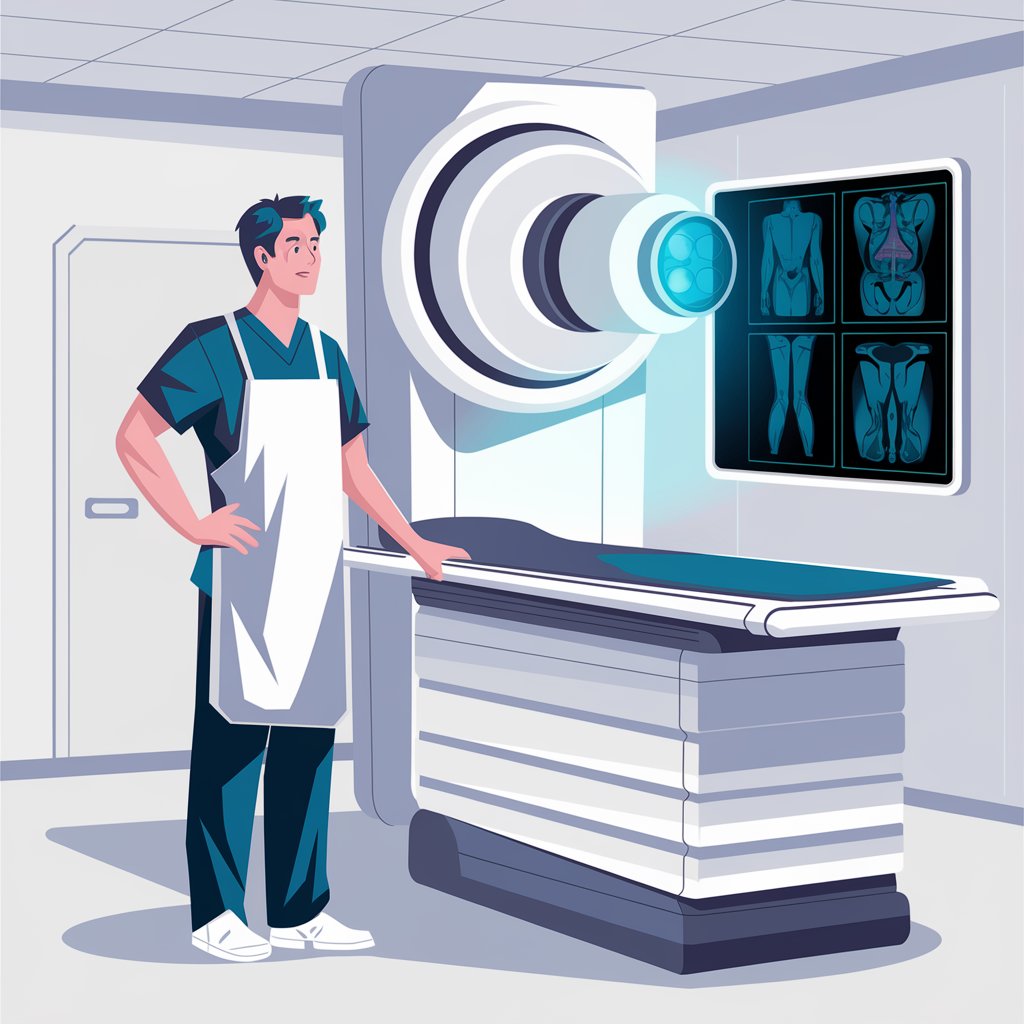Specified education for becoming radiologic technologists (radiology techs) exists through radiology tech programs. Through their coursework, students learn how to use all types of diagnostic imaging equipment, which includes performing X-rays, operating CT scanners and MRIs, and delivering ultrasound results that aid physicians in patient diagnosis and medical treatment.
The growing healthcare industry leads to an increasing demand for competent radiology technicians in the market. Professional involvement of radiology techs serves an invaluable function by enabling physicians to access vital medical images from diagnostic scans. Any healthcare candidate who likes combining technology with patient care should strongly consider studying radiologic technology.
This article provides complete information about radiology tech training that covers curriculum content, entrance criteria, professional qualifications, and potential employment opportunities for radiologic technologists. Such a guide will supply essential insights about radiology tech programs for anyone interested in this profession along with those who aim to pursue this career path.
All Basic Concepts for Radiological Technicians Through Educational Curriculums
1. Basic Medical Knowledge and Terminology
Human anatomy combined with physiology constitutes one of the main learning functions in radiology tech education programs. Essential medical subjects in these programs allow students to interact effectively with healthcare staff and comprehend patient health situations as well as maintain proper medical team communication.
Understandings concerning human body structure and functional operations become essential for recognizing specific organs and body systems which require imaging during diagnostic processes.
Medical Terminology grants students the language tools to create effective communication with physicians, nurses, and patients during medical interactions.
2. Imaging Technology and Equipment
Learning the correct operation of imaging equipment constitutes a substantial part of radiology tech student education. Success in the field depends on the practical knowledge obtained through this section of study. Learning medical students must receive training for safe operation of X-ray machines together with CT scanners, MRIs, and ultrasounds.
- X-Ray Technology: Teaches students about X-ray physics and machine operation, allowing them to properly position patients as well as equipment for generating precise medical images.
- CT & MRI Technology: Students learn the visual operation mechanics of CT (computed tomography) and MRI (magnetic resonance imaging) machines since these machines generate sharper imaging than regular X-rays.
- Ultrasound Technology: Professional certificates in ultrasound technology are available at many radiology tech programs, where students learn to use this non-invasive solution for viewing internal structures and following pregnancy development.
3. Radiation Safety and Protection
Radiologic technologists must consider radiation exposure because it stands as an essential factor in their work. Student radiology technologists receive instruction that demonstrates how to implement safety measures minimizing the exposure of radiation between healthcare workers and patients. The principles of radiation safety, together with established guidelines, need to be thoroughly understood by healthcare personnel who will follow these protocols.
The protective training of radiologic technologists includes using shielding devices to control radiation exposure and maintaining continuous monitoring of radiation levels and image exposure parameters.
The program trains students to establish methods that guarantee patient well-being and safety throughout diagnostic procedure executions which promotes better outcomes.
4. Patient Care and Communication
Student radiology techs learn about vital communication competencies because dealing successfully with patients remains their priority. Patients who undergo imaging tests frequently display anxiety and discomfort, which makes it essential for techs to create a feeling of relaxation through their interventions.
Clinical staff interactions begin with radiologic technologists during diagnostic imaging procedures because they serve as the primary contact for patients. Providing explanations, answering patient questions, and ensuring comfort remains crucial for creating positive patient experiences.
All students learn about maintaining patient confidentiality while gaining knowledge on informed consent and other healthcare ethical and legal practices that appear in clinical settings.
Types of Radiology Tech Programs: Finding the Right Fit
1. Certificate Programs
The fast entry to radiologic technology can be achieved through completing certificate programs for radiologic technology. Students need one to two years in these training programs to gain essential lessons that prepare them to start working in radiology fields. The academic curriculum of certificate programs dedicates its training to specific imaging methods, including X-ray as well as ultrasound.
- Duration: Typically 1-2 years
- Core competencies: Preparation for certification make up the primary learning objectives of this program.
Graduates complete necessary requirements that allow them to pass certification tests, leading directly to their role as radiologic technologists.
2. Associate Degree Programs
Radiologic technologists need an associate degree in radiologic technology as their basic qualification to start their careers. Multiple community colleges, together with universities, provide these two-year-long certification programs for radiologic technology. Students enrolled in associate degree programs need to take both imaging technology lessons and basic academic classes in English and math, as well as social science topics.
- Duration: Typically 2 years
- Comprehensive Learning: Covers both technical and general education courses
Under clinical supervision, students obtain real-world internships through their program activities.
3. Bachelor’s Degree Programs
The pursuit of advanced career opportunities or focus on CT, MRI, or sonography through radiologic technology requires earning a bachelor’s degree in the field. A four-year program gives students extensive education in radiology technology by teaching complex methods alongside research and leadership development.
- Duration: Typically 4 years
- Radiology Specialties: Focus on CT, MRI, ultrasound, or radiation therapy experience
- Leadership: Prepares graduates for supervisory or managerial roles in the radiology department.
4. Online Radiology Tech Programs
Online education expansion has introduced hybrid and totally online radiology tech programs to educational opportunities. The curriculum allows students to study theoretical subjects remotely through distance learning while providing clinical exposure at a healthcare facility. Remote residents, together with individuals who experience scheduling issues, could find online radiology tech programs to be appropriate.
- Duration: Varies, often similar to traditional programs
Students will take online classes combined with laboratory training completed in person.
The online format of this program presents itself as an adaptable choice for all those who need versatile schedules, including working individuals and students.
Certification and Licensure: Taking Your Career to the Next Level
The practice of radiologic technologists in almost all states requires professional certification along with licensing before they can work. The American Registry of Radiologic Technologists (ARRT) functions as the premier certification organization dedicated to radiologic technologist practice in the United States.
Student radiology techs must take the ARRT exam to get certified after completing their education because this exam assesses their radiology-related knowledge, also including patient care procedures and safety standards.
Medical practitioners in radiologic technology have to complete specific state requirements beyond basic certification, which might require exams and ongoing education.
In the field of radiology technology, professionals must obtain certification because employers put great value in demonstrating advanced expertise and clear understanding of the profession.
Job Outlook for Radiology Techs: A Growing Field
1. High Demand for Radiologic Technologists
The job market for radiology techs will expand substantially throughout the upcoming ten years. The U.S. Bureau of Labor Statistics projects radiologic technologist job situations will surge by 9% between 2020 and 2030, more quickly than normal occupation job projections.
Medical imaging demands continue to rise because of an aging society throughout the nation. Older adults need imaging tests to observe and treat their health conditions regarding bone fractures, arthritis, and cancer.
Progressive imaging technology development, especially MRI, CT, and ultrasound devices, will drive the necessity for qualified radiologic technologists.
2. Career Flexibility and Advancement
People who specialize in CT, MRI, or sonography can access better-paying positions amongst radiologic technologists. Many radiology techs can pursue leadership vacancies in hospitals, clinics, or diagnostic centers following their training.
The process of choosing sonography or MRI specialties enables radiologic technologists to earn more money.
Extended practice in radiology technology allows technicians to qualify as supervisors who direct staff while maintaining consistent patient care quality.
Conclusion: Starting Your Journey in Radiology Tech Programs
Students interested in medical operations with technological components should pursue courses to become radiology techs, which leads to rewarding work within an active healthcare environment. Future radiologic technologists should consider their educational objectives and personal schedule because these factors determine what degree program matches their expectations.
A career in radiology technology becomes accessible when you complete program courses, get your certification, and practice in medical settings to bring you fruitful work at the junction of tech innovation and patient care. Future clinical work opportunities in radiology offer both fundamental importance and satisfying career advancement opportunities to specialists willing to pursue this field.





